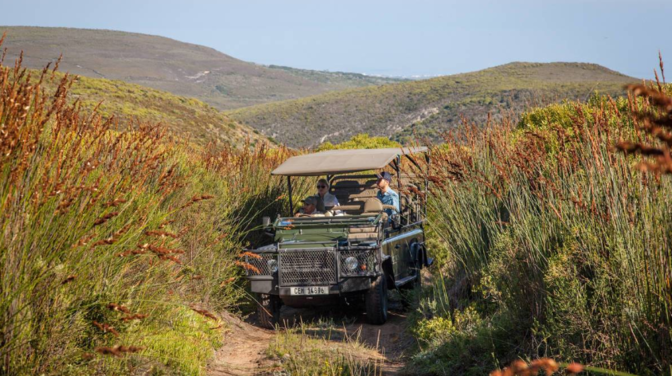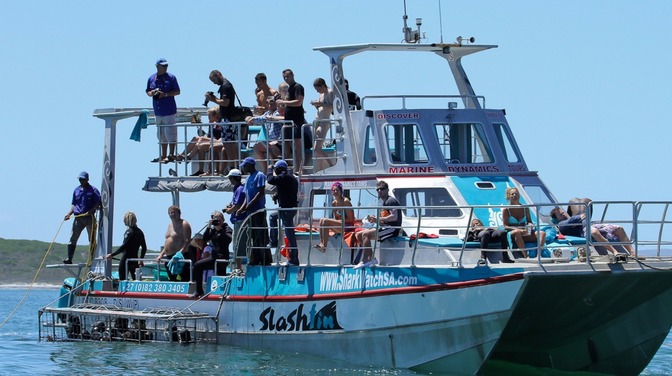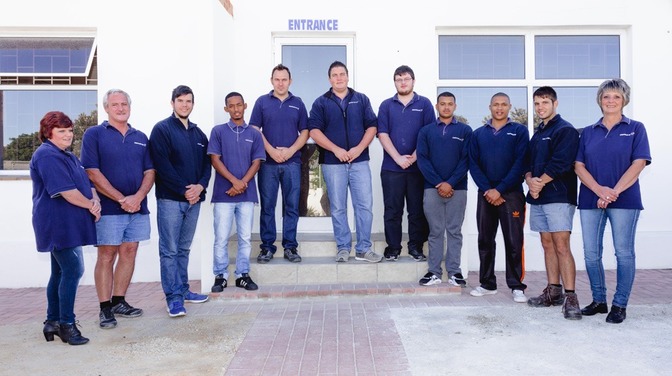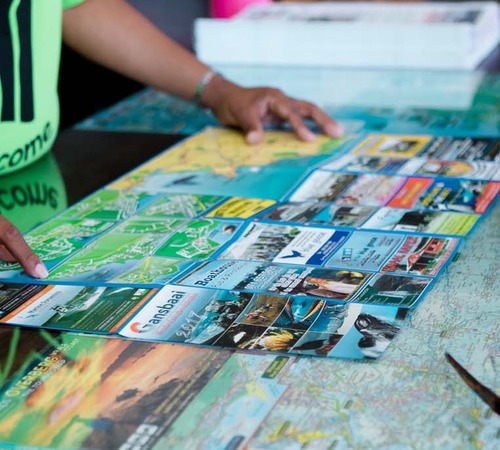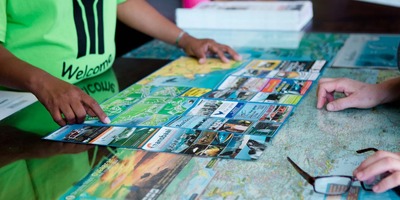Select a category
The history of Gansbaai is as rich and colourful as the exquisite beauty and bounty of the environment that birthed it.
Since the Stone Age times, some 80,000 years ago, when the first ancestors of modern man haply co-existed in the abundance of nature along the rocky shores of Walker Bay, little have changed to spoil the pristine uniqueness of this "Klein Paradijs" where some people believe Adam and Eve used to live.
The abundant sea and wildlife and variety of floral and fynbos vegetation along the coast and Duynefontein Mountains never ceased to provide man and animal with ample food, shelter and freedom to experience nature to the fullest.
Several caves along the rocky coastline around Gansbaai still jealously guard the ancient secrets and sorrows of yester-year's peoples who lived, loved and roamed this region eons ago. This area, later named De Kelders after the numerous historical caves, also boasts the only freshwater cave on the coast of Africa. It is in one of these caves, the Klipgat Cave, where archaeological evidence was found of early modern man living here some 80,000 years ago, as well as the Khoisan about 2,000 years ago. Klipgat Cave is now an important historical site in the Western Cape. Similar old remains have only been excavated in two other places in South Africa.

Nature's law of giving and taking is also very evident in this land of milk and honey.
The same Khoisan peoples who freely roamed and treasured the richness of this land before so-called civilization moved in, were all wiped out during a devastating smallpox epidemic in 1713, thus taking an invaluable treasure chest of untold stories and cultural heritage with them to the grave.
Furthermore, the same treacherous seawaters around Gansbaai that provide so lavishly, also claimed its rightful share over the years. Since the first explorer ships docked here centuries ago for fresh food and water, the rocky shores between Danger Point and Cape Infanta claimed thousands of lives. Seven shipwrecks around Danger Point and 140 wrecks along this coastline are silent testimony to the perilous force of these waters. Small wonder that the Flying Dutchman was spotted here for the first time.
One of these shipwrecks, the HMS Birkenhead, became famous for being the first to apply the "women and children first" protocol in 1852. The women and children were saved, but all 445 men, mostly soldiers, perished.
Even today, the rough seas around Gansbaai, which has since become world-renowned for its abalone, Great White Sharks and Southern Right Whales, regularly claim the lives of fishermen and poachers.
The first white settlers who settled in this area in the early 1700's were mostly nomadic sheep and cattle farmers who only occasionally fished for fun. It was only in the early 1800's that the abundant sea life started attracting fishing activities.The first permanent fisherman's cottages were built in 1811 under the dense Milkwood forests in Stanford's Bay, near De Kelders.
The town of Gansbaai originates from 1881 when an adventurist, Johannes Cornelis Wessels, walked here from Stanford and discovered the fishing possibilities and freshwater fountain near the old harbour. Other families followed suit and named the place Gansgat after a colony of Egyptian geese that congregated at the fountain. It was later altered to the more respectable Gansbaai.
Life in a secluded fishing village was hard in those years.
The fishermen were totally dependent on the booty from the sea and were paid very little for their yield.
In 1939 a small factory to process sharks' livers for Vitamin A and lubricant during World War II brought temporary relief to the local economy. It was, however, only in 1952 that the fishing trade began to recover when the Gansbaai Fishing Co-op was formed. This was the first co-op of its kind in South Africa, and even exists today, though in a transformed state.
The fish meal factory, Gansbaai Marine, followed and finally got Gansbaai in the green. It is currently still regarded as the primary industry and employment generator in Gansbaai. The canning division is the largest of its kind in the southern hemisphere. The town received municipality status in 1963 and is today a bustling village and holiday resort with a thriving infrastructure and tourism industry.

